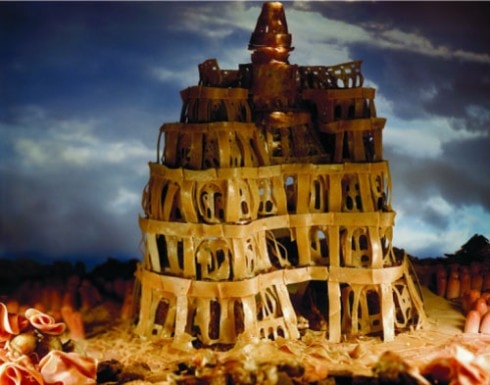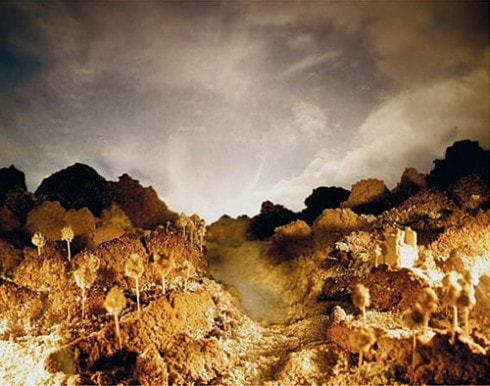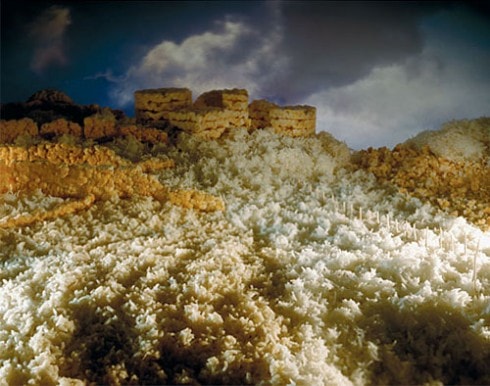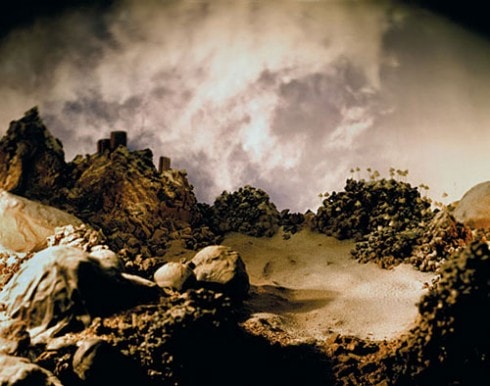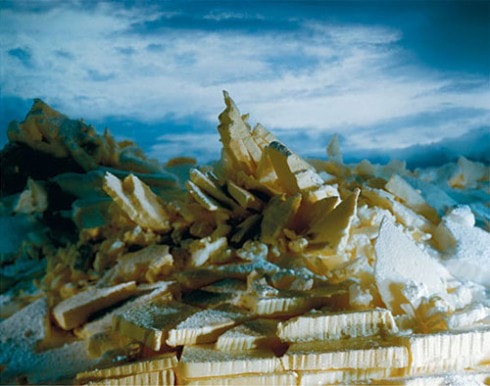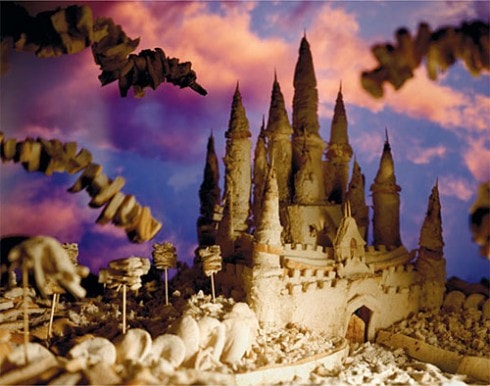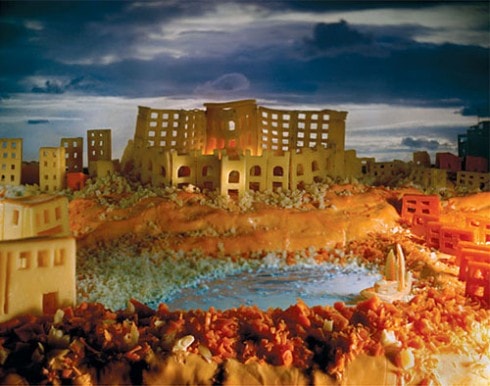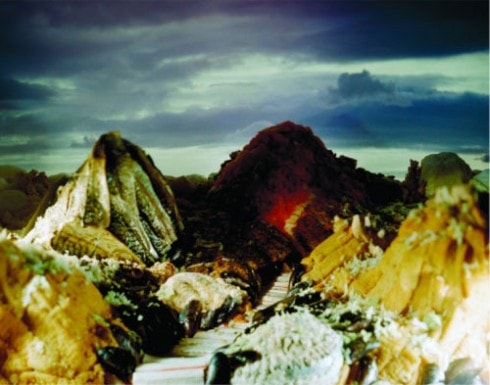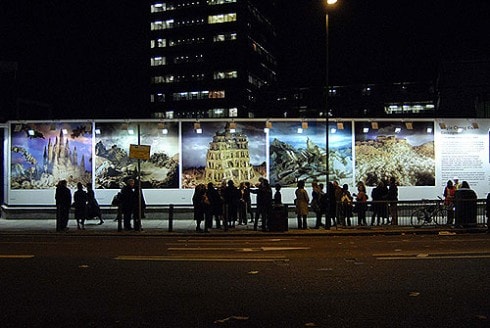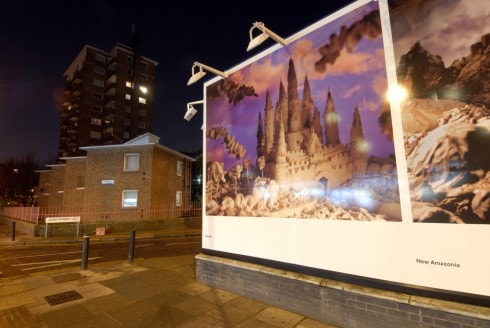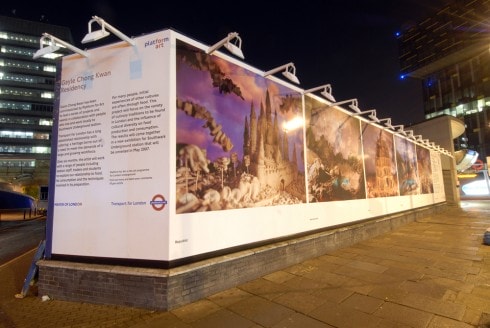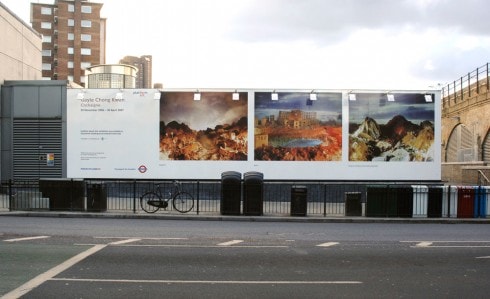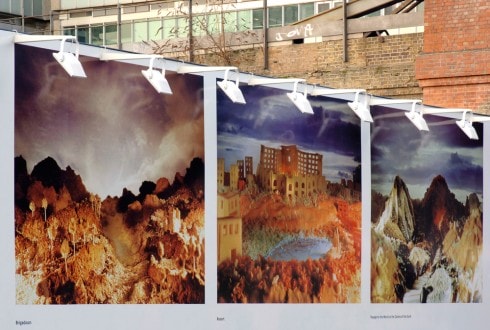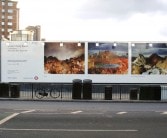Platform for Art presents Cockaigne by Gayle Chong Kwan, a new exhibition of photographs for Southwark Underground station.
Inspired by utopian legends and developments in global tourism, Chong Kwan’s images depict a range of fantastic landscapes set against dramatic skies. The 14th-century myth of the Land of Cockaigne, a paradise where work is forbidden and every human desire is catered for, is the major influence behind this work.
In these images, Chong Kwan has, quite literally, produced a feast for the eyes, where instead of brick, stone and concrete there are villages of oats, bread castles and mountains of chocolate.
The dream of utopia is an ancient one that continues today as a common source of inspiration and debate. Through Cockaigne, Chong Kwan creates fantastical landscapes to reveal the contradictions inherent in the desire to escape to and find satisfaction in a more perfect world.
Residency
Chong Kwan has been commissioned by Platform for Art to lead a series of projects and events in collaboration with people who live and work locally to Southwark Underground station. Over six months, the artist will work with a range of people including station staff, traders and students to explore our relationship to food, its consumption and the techniques involved in its preparation.
The results will come together in a new exhibition for Southwark Underground station that will be unveiled in May 2007.
More details about the photographs on show at Southwark:
Babel
Constructed from raw, cooked and dried meat, Babel refers to the bible story of the men who tried to build a tower to reach up to heaven. God foiled them by confusing their speech with new languages so that they could no longer understand one another.
Brigadoon
This scene, made from oats, is based on the film of the myth of Brigadoon, a Scottish village that exists for only one day in each century. The 1954 Hollywood production was filmed on a stage set because the producer was unable to find a location in Scotland he deemed “Scottish” enough.
Lotosland
This landscape is a composition made of rice. The work is based on Tennyson’s poem “The Lotus-Eaters”, which recounts how Odysseus, sailing home from the Trojan War, disembarked en-route into a fictional and dreamy land of flowery food.
New Amazonia
New Amazonia is a landscape made of chocolate and is named after a feminist utopia written by Elizabeth Burgoyne Corbett, a campaigner for women’s suffrage in the 19th century. The work makes a connection with the supposedly complex female relationship with chocolate and a utopia constructed for women.
New Atlantis
Made from frozen butter, margarine and lard, New Atlantis is also the name of Francis Bacon’s 17th-century utopia and draws on Casper David Friedrich’s The Wreck of the Hope, where seasons, plants and animals were modified.
Republic
This scene made of bread resembles the castles of Disney and of fairytales. The title refers to The Republic, an influential political treatise on government by compulsion and authority, by the Greek philosopher Plato, written in 390 BC.
Resort
Resort is the only contemporary “paradise” in the series. It is made entirely out of cheese and dairy products and takes the form of an incomplete tourist complex. It could be seen equally as a half-completed building or as an abandoned ruin.
Voyage to the World at the Centre of the Earth
A landscape made from fish and seafood (a smoked-salmon mountain, a path of crab sticks), Voyage to the World at the Centre of the Earth is based on an anonymously written utopia from 1755. The narrator falls into Mount Vesuvius and arrives in an idyllic region. The inhabitants are strict observers of animal rights, and fish are fed rather than eaten.
Cockaigne is a commission by Autograph (APB)
